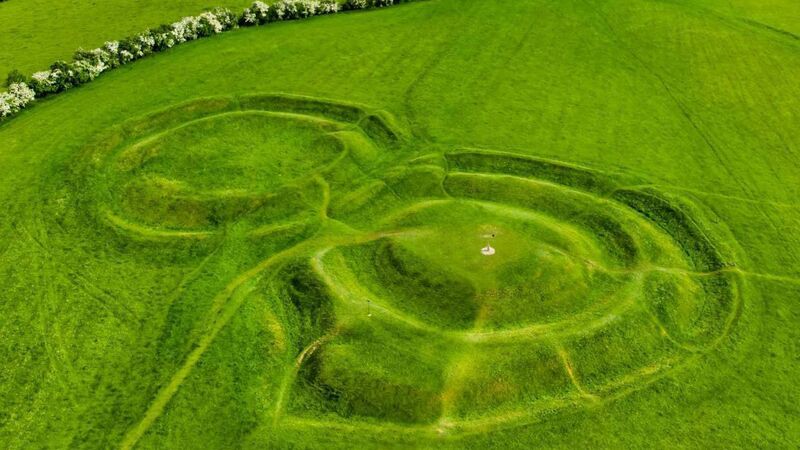Áilín Quinlan: This Halloween, let’s not get carried away with boo baskets

She wrote a passionate love poem that became world-famous. , which usually shows up in collections of the Top 10 Love Poems of all time, was written in the mid-1840s.
It details, with grace and dignity, the different ways in which she absolutely adored her husband, poet and playwright Robert Browning.
How things change.
These days we assemble a boo basket.
One of the madder and more useless Halloween gifting ideas I’ve come across, the boo basket concept went major league on Tik Tok and attracted millions of views when it was floated a few years ago.
Sadly, it continues to enjoy traction - a well-known Irish interiors shop is currently offering customers the option of creating their own Halloween boo baskets “filled with cosy autumn must-haves and seasonal treats”.
What can I tell you?
This is who we are now.
I’m also hearing about a passion for motorised inflatable Halloween costumes in the shape of dinosaurs, space aliens and sumo wrestlers. Great fun.
All the same, maybe now’s a good time to remind ourselves that our ancient Celtic heritage of Samhain should ideally not be confused with the cynical, commercialised, make-a-quick-buck American version being touted by the retail sector.
Our children should know, and with deep pride, that Ireland’s ancient festival of Samhain goes way back, way, way back, long before Christopher Columbus ever even thought about boarding that ship in 1492 and heading off to wreak havoc on the Americas.
Early Irish manuscripts are peppered with references to the cultural and magic significance of Samhain.
Samhain is the division of the year; it marks a watershed between summer, which is the bright half of the year with the sun dominant in the sky, and winter, the darker half when the sun is in retreat. This date marks the split not just between the seasons, but also between the world we can see and the spirit world, or the otherworld.
It is speculated that Samhain originated in Celtic Ireland at least 2,000 years ago. It’s also speculated that Samhain’s roots may well go even further back, back even to before the Celts ever set foot here - possibly up to 5,000 years ago.
Two great hills in the Boyne Valley were connected to Samhain in Celtic Ireland, Tlachtga and Tara. Tlachtga was the main site of the Great Fire Festival of Samhain, while it’s believed that the Hill of Tara was also extremely significant - the entrance passage to the Mound of the Hostages on Tara, said to be some 5,000 years old, is aligned with the rising sun around Samhain.
Some experts believe this means Samhain was actually celebrated here long before the first Celts even arrived in Ireland 2,500 years ago.
The decline in the sun’s strength and the sense of cold, withering decay that winter brings, was a deep source of anxiety for early humans.
The dancing sparks from the lighting of the Winter Fires symbolised an attempt to assist the sun on its journey across the sky and speed up summer’s return.
And you can see why they felt they needed a bit of heat and warmth – the belief was that at Halloween/Samhain, the Lord of the Underworld was released from the sun’s control to stalk the earth along with his entourage of the dead.
In Celtic mythology, this god was called Donn, which is the Irish word for brown. Donn, according to myth, was the commander of one of a fleet of foreign invading ships which was wrecked by a storm.
The story goes that after Donn and many of his comrades drowned in this storm, Donn was buried on the Skellig Islands off the coast of Kerry, in a place known as Tech Donn, or House of Donn. Over time he became identified with the otherworld and gained the status of god of the dead.
The dead assembled at Donn’s house and the souls of the damned lingered there before departing for hell.
At Samhain, Donn left his house and travelled the country collecting souls, accompanied by his creepy entourage of dead things.
These entities could be quite malevolent if displeased, so some form of appeasement was needed. This was generally provided in the shape of ritual offerings.
If offerings were not forthcoming, bad luck would descend on a house, and not just for Halloween night but for the whole coming year.
This tradition was brought to America by the huge numbers of Irish who emigrated there over the 19th century, and particularly in the 1840s, during the time of the Great Famine. Over time, Halloween became a major holiday in the US, blending with other folk rituals such as the American harvest-time tradition of carving pumpkins.
Just saying.
Let’s have pride in our own ancient Celtic culture and heritage and not get too carried away with boo baskets.







 App?
App?




